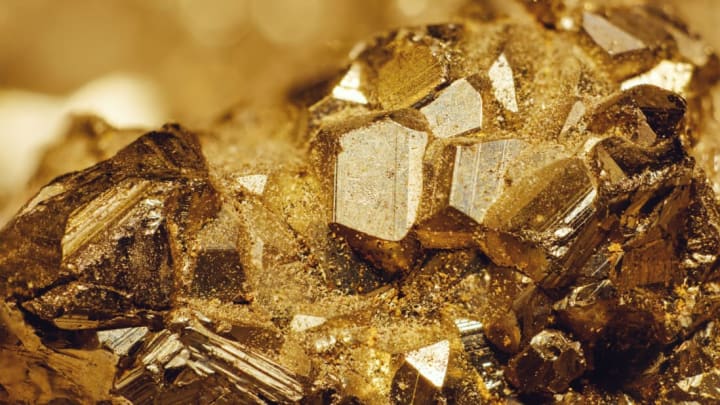In the California gold rush of the 1800s, the metal pyrite was known as “fool’s gold” because it mimicked the real thing, duping entrepreneurs into believing they had struck it rich.
According to science, they may have been on to something after all—pyrite does contain real gold, though it’s more of a sick joke courtesy of nature than anything that would have benefited them financially.
In a new research article published in Geology, researchers examining pyrite with an atom probe found tiny little specks of gold invisible to the naked eye embedded in the metal. The gold is obscured in “nanoscale crystal defects,” which are visible only with special atom visualization tools.
The work was conducted by Curtin University, the University of Western Australia, and the China University of Geoscience. Lead researcher Dr. Denis Fougerouse said in a press release that the “invisible” gold had never been recognized previously, though pyrite was known to contain gold nanoparticles. Pyrite-gold alloys also exist.
So how did the gold wind up there in the first place? Researchers believe that as the pyrite developed, it was subject to imperfections in its structure that would allow for traces of gold to become embedded inside. So, technically speaking, anyone panning for gold who dismissed pyrite could have been holding some gold in their hand.
"The more deformed the crystal is, the more gold there is locked up in defects," Fougerouse said. “The gold is hosted in nanoscale defects called dislocations—one hundred thousand times smaller than the width of a human hair—so a special technique called atom probe tomography is needed to observe it.”
Unfortunately, there’s no easy way to retrieve it. Fougerouse said that one method may involve an extraction process known as selective leaching, which would dissolve the gold using the dislocations as fluid pathways. That's heady stuff for the 21st century, let alone the 19th century. Pyrite may contain gold, but it still wouldn’t have done anyone in the gold rush much good.
[h/t Gizmodo]
